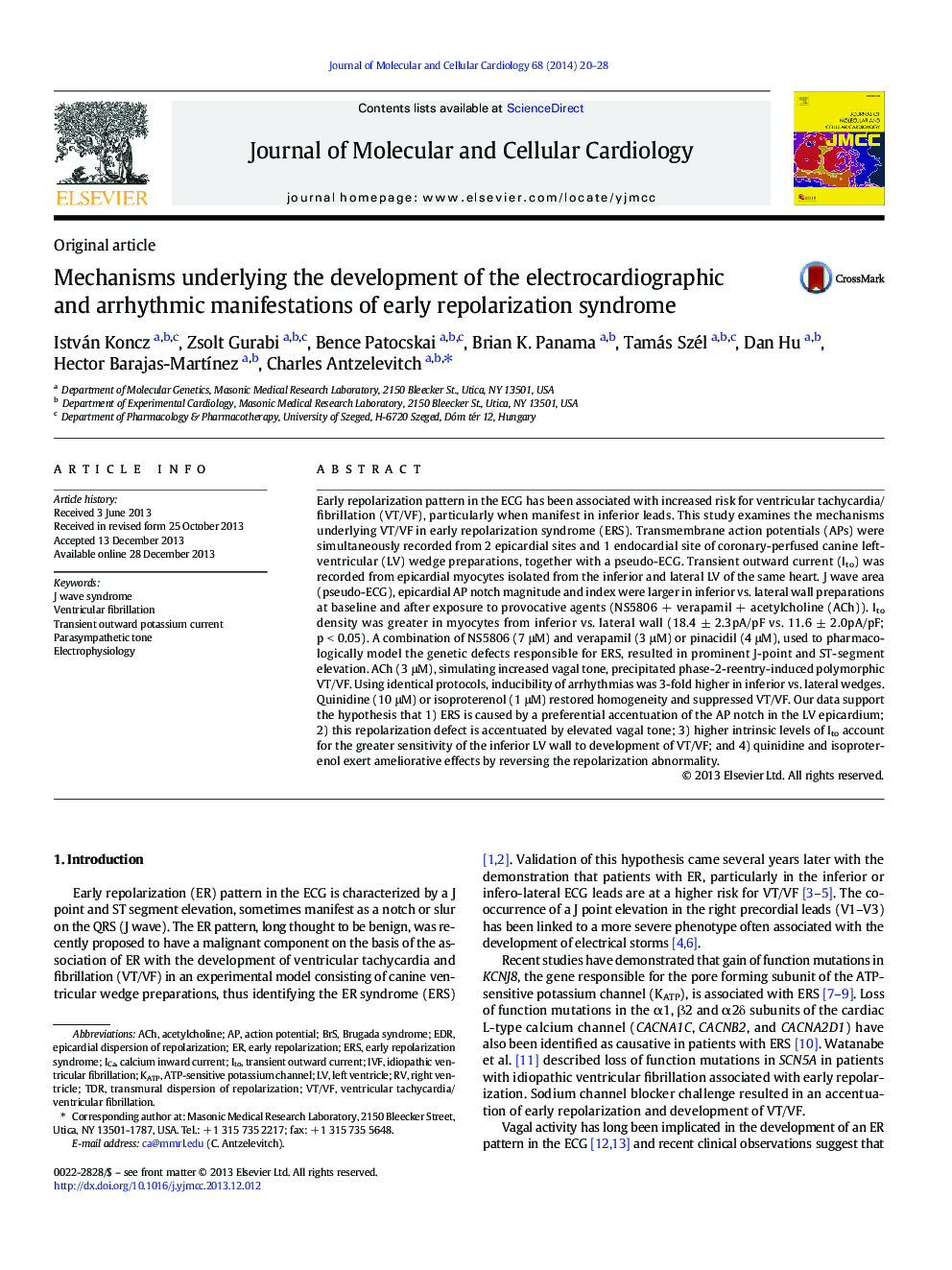| Article ID | Journal | Published Year | Pages | File Type |
|---|---|---|---|---|
| 8474947 | Journal of Molecular and Cellular Cardiology | 2014 | 9 Pages |
Abstract
Early repolarization pattern in the ECG has been associated with increased risk for ventricular tachycardia/fibrillation (VT/VF), particularly when manifest in inferior leads. This study examines the mechanisms underlying VT/VF in early repolarization syndrome (ERS). Transmembrane action potentials (APs) were simultaneously recorded from 2 epicardial sites and 1 endocardial site of coronary-perfused canine left-ventricular (LV) wedge preparations, together with a pseudo-ECG. Transient outward current (Ito) was recorded from epicardial myocytes isolated from the inferior and lateral LV of the same heart. J wave area (pseudo-ECG), epicardial AP notch magnitude and index were larger in inferior vs. lateral wall preparations at baseline and after exposure to provocative agents (NS5806 + verapamil + acetylcholine (ACh)). Ito density was greater in myocytes from inferior vs. lateral wall (18.4 ± 2.3pA/pF vs. 11.6 ± 2.0pA/pF; p < 0.05). A combination of NS5806 (7 μM) and verapamil (3 μM) or pinacidil (4 μM), used to pharmacologically model the genetic defects responsible for ERS, resulted in prominent J-point and ST-segment elevation. ACh (3 μM), simulating increased vagal tone, precipitated phase-2-reentry-induced polymorphic VT/VF. Using identical protocols, inducibility of arrhythmias was 3-fold higher in inferior vs. lateral wedges. Quinidine (10 μM) or isoproterenol (1 μM) restored homogeneity and suppressed VT/VF. Our data support the hypothesis that 1) ERS is caused by a preferential accentuation of the AP notch in the LV epicardium; 2) this repolarization defect is accentuated by elevated vagal tone; 3) higher intrinsic levels of Ito account for the greater sensitivity of the inferior LV wall to development of VT/VF; and 4) quinidine and isoproterenol exert ameliorative effects by reversing the repolarization abnormality.
Keywords
BRSJ wave syndromeTransmural dispersion of repolarizationKATPTDRERSEDRICAEarly repolarizationVT/VFAChAcetylcholineElectrophysiologyITOright ventricleleft ventricleventricular tachycardia/ventricular fibrillationParasympathetic toneTransient outward currentTransient outward potassium currentBrugada syndromeEarly repolarization syndromeVentricular fibrillationIdiopathic ventricular fibrillationIVFaction potentialATP-sensitive potassium channel
Related Topics
Life Sciences
Biochemistry, Genetics and Molecular Biology
Cell Biology
Authors
István Koncz, Zsolt Gurabi, Bence Patocskai, Brian K. Panama, Tamás Szél, Dan Hu, Hector Barajas-MartÃnez, Charles Antzelevitch,
